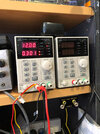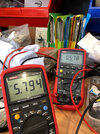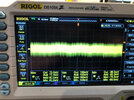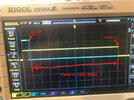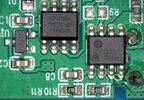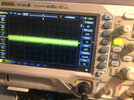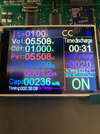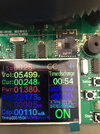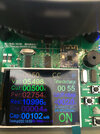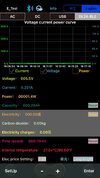v81
Member
I don't know what's in it, all i know is that the power used by the system barely changes with and without the rear camera.Interior LED IR lamps take a bit of power, the A129 Plus now does the video encoding for the rear in the rear camera, and we now have 3 channel cameras, the HK3 needs to support all these.
I was under the impression the A129 Plus had no IR LED's... I certainly can't see where they would be.
From what i can determine, a healthy HK3 should be able to do double the power the A129 Pro Duo requires quite comfortably.
Switching noise when present should be above the range of human hearing.Maybe it is a good way of stopping the microphone picking up switching noise, but that is still a significant amount of unnecessary heat generation, especially when using lithium batteries! I would be surprised if Viofo used a linear regulator for anything that uses significant power.
A healthy HK3 i think is > 100KHz, and some switchers even reach into the MHz range for switching.
As for heat, a switching reg will also produce heat, but the amount of heat they produce is roughly fixed regardless of input / output voltage.
With a linear reg they are simpler and need fewer additional components. For a small voltage drop they produce only a small amount of heat, but unlike switchers as that voltage drop increases so does the heat
I kind of agree with that, interestingly I've been running a BlackVue DR650s for years, my first dashcam, and it's 12/24v. So at that point I hadn't considered USB ones existed, back than i hadn't put a lot of thought into it.Not sure, but using USB means that it can be plugged into a computer for file access and a USB powerbank for parking. Overall I think people feel more comfortable/safer with a USB powered camera.
Nowdays i put too much thought into it, like why don't vehicle manufacturers go a little extra and add low voltage disconnect to ordinary cars for low priority accessories.... but that's just me getting carried away.
The established USB standards for power are 5v, as far as i know there is no standard for 9v.Even on USB-C, they are still using the 5.? volts when they could have stepped it up to 9 volts within the USB-C spec., but the A139 seems to do much better on power regulation anyway, especially for the remote cameras.
Qualcom bastardised something up with their 'quick charge' that if i recall technically broke USB spec and used 9v and later on other voltages.
We now have propper standards from the USB-IF of PD2.0 and PD3.0 which if i recall allow up to 120 watts of power by use of negotiation between sink and source.
This is achieved over 5, 9, 15 and 20 volts at up to 6 amps.
That said, the additional chips, slightly fancier cables and extra effort involved makes the uptake of the proper standards less appealing, and thus manufacturers just opt to continue running outside specs.
Not meaning to nitpick, but USB Type C is a connector and with the exception of electrical and mechanical limits it does not imply a capability of running a different voltage (nor even speed). that's the job of the USB-PD standards.
Often mixed up.

